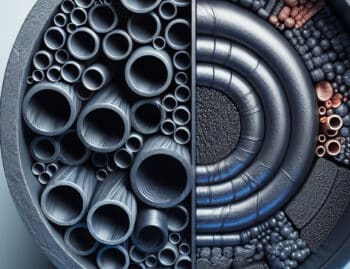
Stainless steel is one of the most reliable materials for construction: it can easily resist corrosion and fire. It tends to last over 100 years in most cases, making it an excellent choice for everything from laboratory equipment to jet engines and chemical containers.
Steel tubing can be made from five major groups of stainless steel: austenitic, ferritic, martensitic, duplex or precipitation-hardening. These can either come welded or seamless, and as square, rounded or rectangular. All of these properties make steel tubing capable of fulfilling a variety of roles in a medical setting.
Note that steel tubing for the medical industry is often 304 or 304l (low-carbon) welded stainless steel. The low carbon content makes this type of steel even more resistant to corrosion than its 302 counterpart.
Additionally, over 88% of steel tubing gets recycled. This means it is a low-waste option for healthcare professionals looking to design supplies.
Materials used to build medical equipment need to be as reliable as possible. The efficacy of such materials could mean the difference between successfully treating patients, or otherwise. This is why high-quality steel tubing is recommended for medical use.
Medical Applications for Steel Tubing
Steel is commonly used throughout hospitals and doctor’s surgeries. Here are some of the main ways that steel tubing has a presence in medical settings:
- Steel is often used to build hospital beds and wheelchairs. It is a sturdy material that is capable of supporting these structures for decades without rusting or corroding. As a non-porous and smooth surface, steel tubing also makes for a sanitary surface for hospital bed rails. This is an important quality in a setting that sees an increased volume of pathogens, especially during the era of COVID-19.
- IV stands are usually made from steel. As the primary way of delivering vital nutrients to patients, IV stands cannot be flimsy and need to stand upright at all times. This is why they are often made from high-grade stainless steel tubing.
- Steel tubing is often used in coronary stents. After suffering from a heart attack or similar, patients usually need to have stents fitted inside their arteries. These help to artificially open up the affected artery, eliminating the blockage that caused a heart problem in the first place. Stents are there to reduce the chance of further blockages, so it is vital that they are resistant to corrosion and strong enough to withstand the vascular environment.
- Dental braces often use steel tubing. Traditional dental braces usually employ steel tubing to help keep the fixture sturdy and in place. The same is even true for some types of dental implants. Steel’s sanitary properties make it a great choice for dental products.
Steel tubing is one of the key materials in the medical industry. From large-scale production of hospital beds to the development of coronary stents and equipment such as scalpels, steel proves to be a sturdy option that is sanitary and easy to clean.











